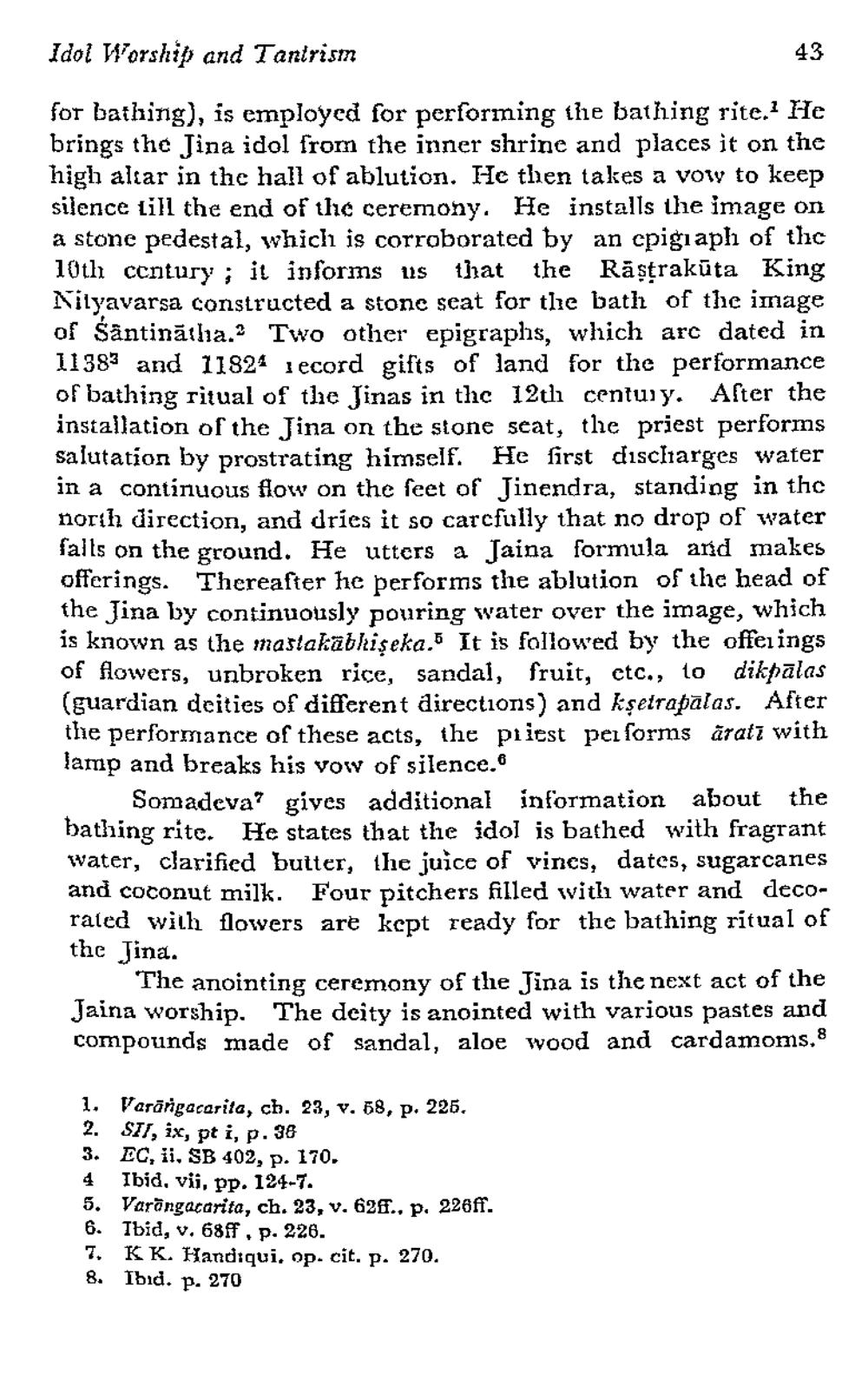________________
Idol Worship and Tantrism
43
for bathing), is employed for performing the bathing rite. He brings the Jina idol from the inner shrine and places it on the high altar in the hall of ablution. He then takes a vow to keep silence till the end of the ceremony. He installs the image on a stone pedestal, which is corroborated by an cpigiaph of the 10th century; it informs us that the Răstrakūta King Nilyavarsa constructed a stone seat for the bath of the image of Santināılla. Two other epigraphs, which are dated in 11383 and 11821 record gifts of land for the performance of bathing ritual of the Jinas in the 12th century. After the installation of the Jina on the stone seat, the priest performs salutation by prostrating himself. He first discharges water in a continuous flow on the feet of Jinendra, standing in the north direction, and dries it so carcfully that no drop of water falls on the ground. He utters a Jaina formula and makes offerings. Thereafter he performs the ablution of the head of the Jina by continuously pouring water over the image, which is known as the mastakabhiseka. It is followed by the offerings of flowers, unbroken rice, sandal, fruit, etc., to dikpalas (guardian deities of different directions) and kşetrapalas. After the performance of these acts, the priest performs äratī with lamp and breaks his vow of silence.
Somadeva? gives additional information about the bathing rite. He states that the idol is bathed with fragrant water, clarified butter, the juice of vines, dates, sugarcanes and coconut milk. Four pitchers filled with water and decorated with flowers are kept ready for the bathing ritual of the Jina.
The anointing ceremony of the Jina is the next act of the Jaina worship. The deity is anointed with various pastes and compounds made of sandal, aloe wood and cardamoms.8
1. Varõngacarita, ch. 23, v. 58, p. 225. 2. SII, ix, pt i, p. 38 3. EC, ii, SB 402, p. 170. 4 Ibid, vii, pp. 124-7. 5. Varāngacarita, ch. 23, v. 621., p. 226ff. 6. Tbid, v. 68ff, p. 226. 7. KK. Handiqui, op. cit. p. 270. 8. Ibid. p. 270




